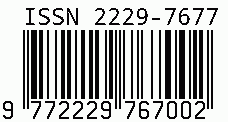
International Journal on Science and Technology
E-ISSN: 2229-7677
•
Impact Factor: 9.88
A Widely Indexed Open Access Peer Reviewed Multidisciplinary Bi-monthly Scholarly International Journal
Plagiarism is checked by the leading plagiarism checker
Call for Paper
Volume 16 Issue 4
October-December 2025
Indexing Partners



















Cloud Network Anomaly Detection using Federated Learning and Explainable AI
| Author(s) | Mr. Praveen Kumar Reddy Idamakanti |
|---|---|
| Country | India |
| Abstract | Cloud computing environments handle vast amounts of data, making them prime targets for cyber threats such as Distributed Denial-of-Service (DDoS) attacks, ransomware, and insider threats. Traditional centralized anomaly detection methods pose significant privacy risks, scalability challenges, and high computational costs. To address these issues, we propose a privacy-preserving, federated learning (FL)-based anomaly detection model that enables decentralized threat detection without exposing raw data. Our approach integrates Explainable AI (XAI) techniques such as SHAP, LIME, and attention mechanisms to enhance interpretability and transparency, enabling security analysts to understand and validate AI-driven anomaly detections. We optimize model synchronization to reduce communication overhead. The proposed system ensures real-time threat detection, adaptability to evolving attack patterns. Experimental evaluations demonstrate improved accuracy, lower false positives, and enhanced explainability, making our approach a scalable and trustworthy solution for cloud network anomaly detection. |
| Field | Computer > Network / Security |
| Published In | Volume 16, Issue 3, July-September 2025 |
| Published On | 2025-07-30 |
| DOI | https://doi.org/10.71097/IJSAT.v16.i3.7336 |
| Short DOI | https://doi.org/g9vzfp |
Share this


CrossRef DOI is assigned to each research paper published in our journal.
IJSAT DOI prefix is
10.71097/IJSAT
Downloads
All research papers published on this website are licensed under Creative Commons Attribution-ShareAlike 4.0 International License, and all rights belong to their respective authors/researchers.

